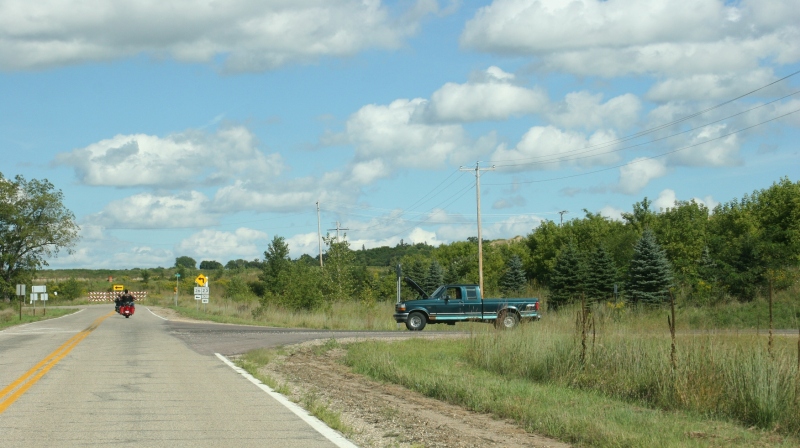
“Water/Ways” prompts me to think about all the uses for water and much more.
I FLUSH THE TOILET. Wash my hands. Drink a glass of water. Throw laundry in the washing machine. Shower. Water plants.

I never think about how much water it takes to make something. In this interactive exhibit, I learned that 240 gallons of water are needed to make a single smartphone.
And I never think about it. Water. It’s just always there, flowing from the faucet.

This “Water/Ways” art directs me to the exhibit at the NCHS.
But “Water/Ways,” a traveling exhibit from the Smithsonian’s Museum on Main Street program, and “We Are Water MN” are causing me to consider this vital natural resource that flows through every aspect of my days.

The sidewalk curves like a river to the Treaty Site History Center along U.S. Highway 169 on the north edge of St. Peter.
Sunday afternoon I visited the Treaty Site History Center in St. Peter where the Nicollet County Historical Society is hosting joint national, state and local water-themed exhibits through September 25. After that, the Smithsonian show will move to these Minnesota communities: Red Wing, Sandstone, Lanesboro and Detroit Lakes.

Entering the “Water/Ways” exhibit, a collection of informational panels.
What does water mean to you? That question posted on a display panel sets the tone for this exhibit packed with information about water. More than simply words, the panels feature interactive aspects that stretch this beyond a compilation of facts and accompanying visuals.

According to this graphic, 40 states (in red) are expected to experience water shortages by 2024. That includes Minnesota.
What would you lose if you did not have water?

A section of the Minnesota exhibit asks, “What’s in the water? Minnesota’s common pollutants and where they come from.” Visitors can pull the cards from the rack (shown here) and learn about those common pollutants to Minnesota waterways.
What’s in the water?

Visitors share water memories.

One way a visitor pledges to protect water.

This graphic breaks down water usage in Minnesota.
Visitors are encouraged to share their memories of water, to list ways they can protect water, to learn what’s in Minnesota’s water and more. In this state of 11,842 lakes, water covers more than 13 million acres (or six percent of Minnesota), more than any other state. That’s according to a 2010 “Minnesota Water Facts” report I found online from the Minnesota Department of Natural Resources.

I appreciate the “We Are Water MN” aspect of the exhibit.
The Minnesota Humanities Center collaborated with the DNR and other agencies in creating the companion exhibit, “We Are Water MN.”

Vintage ice skates were part of the local portion of the exhibit.
Additionally, Nicollet County infused its water history. The Minnesota River runs through this county with 105 miles of river front land and was instrumental in bringing early settlers to the region. My own maternal ancestors settled in the Minnesota River Valley near Courtland.

In a side room, you’ll find Kay Herbst Helms’ photo exhibit, “Water Rights.” In the table display, visitors are asked to pen their thoughts on water.

A photo of a photo in Kay’s exhibit.

On paper droplets, visitors write about water.
Mankato photographer Kay Herbst Helms brings her photographic perspective to “Water/Ways” with 19 black-and-white water-themed photos in her “Water Rights” collection. Her exhibit, she says, “celebrates water and some of the people who are helping to protect our water rights now and for generations to come.”

More ideas expressed about water.
This isn’t the first time Kay has focused on water in photography. She created “Water Vapors” and now “Water Vapors II,” showing through September 30 in the History Center Art Gallery at the Blue Earth County Historical Society in Mankato.

One of many quotes spark conversations about water.
This quote in the “Water/Ways” exhibit strikes me more than any other:
No water, no life.
No blue, no green.

These panels address how water inspires humanity in our art, music, dance and literature.
What does water mean to you?
BONUS PHOTOS:

“We Are Water MN” pins in a jar.

This section directs visitors to look to the future of water.

There’s even an area for little ones to put on a puppet show.

More panels, more information to digest.
FYI: Click here to read my previous post about a celebration I participated in as part of the “Water/Ways” exhibit.
© Copyright 2016 Audrey Kletscher Helbling




















































































































Recent Comments